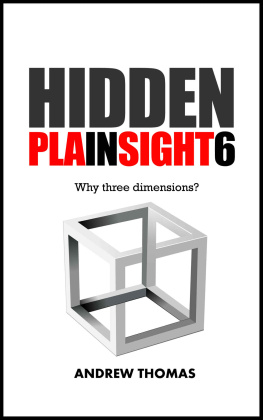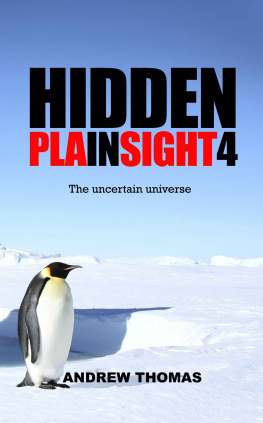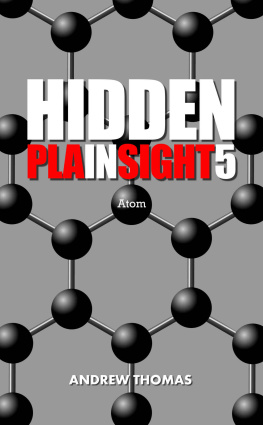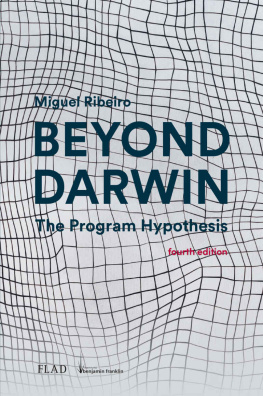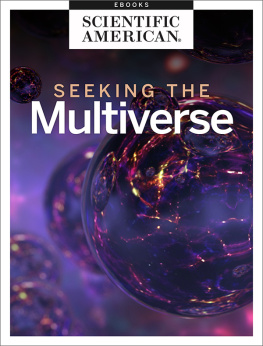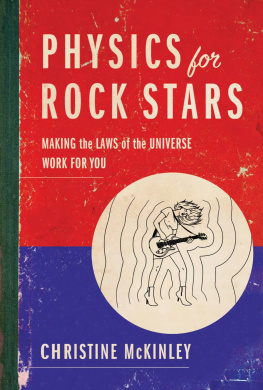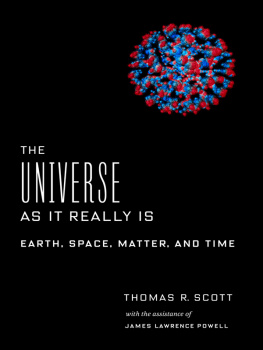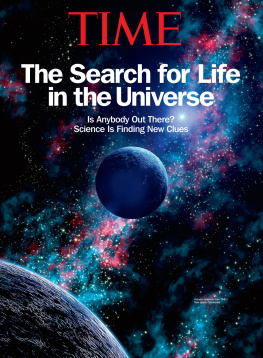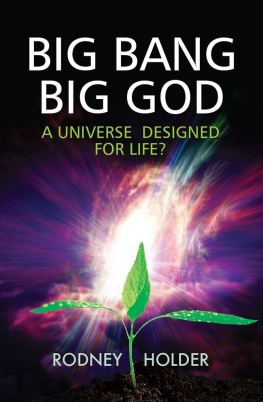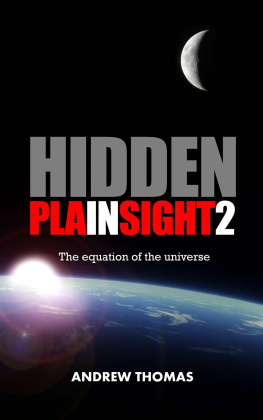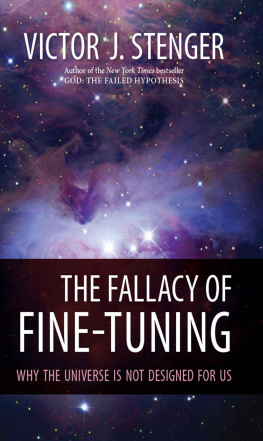Andrew H. Thomas - The Fine-Tuned Universe
Here you can read online Andrew H. Thomas - The Fine-Tuned Universe full text of the book (entire story) in english for free. Download pdf and epub, get meaning, cover and reviews about this ebook. year: 2017, publisher: CreateSpace, genre: Science fiction. Description of the work, (preface) as well as reviews are available. Best literature library LitArk.com created for fans of good reading and offers a wide selection of genres:
Romance novel
Science fiction
Adventure
Detective
Science
History
Home and family
Prose
Art
Politics
Computer
Non-fiction
Religion
Business
Children
Humor
Choose a favorite category and find really read worthwhile books. Enjoy immersion in the world of imagination, feel the emotions of the characters or learn something new for yourself, make an fascinating discovery.
- Book:The Fine-Tuned Universe
- Author:
- Publisher:CreateSpace
- Genre:
- Year:2017
- Rating:3 / 5
- Favourites:Add to favourites
- Your mark:
- 60
- 1
- 2
- 3
- 4
- 5
The Fine-Tuned Universe: summary, description and annotation
We offer to read an annotation, description, summary or preface (depends on what the author of the book "The Fine-Tuned Universe" wrote himself). If you haven't found the necessary information about the book — write in the comments, we will try to find it.
The answers to the big questions: Are the laws of physics fine-tuned for life? Are we alone in the universe? Why is gravity so weak? How can I predict the winner of every horse race?
**
The Fine-Tuned Universe — read online for free the complete book (whole text) full work
Below is the text of the book, divided by pages. System saving the place of the last page read, allows you to conveniently read the book "The Fine-Tuned Universe" online for free, without having to search again every time where you left off. Put a bookmark, and you can go to the page where you finished reading at any time.
Font size:
Interval:
Bookmark:
Andrew Thomas studied physics in the James Clerk Maxwell Building in Edinburgh University, and received his doctorate from Swansea University in 1992.
His Hidden In Plain Sight series of books are science bestsellers.
Hidden In Plain Sight
The simple link between relativity and quantum mechanics
Hidden In Plain Sight 2
The equation of the universe
Hidden In Plain Sight 3
The secret of time
Hidden In Plain Sight 4
The uncertain universe
Hidden In Plain Sight 5
Atom
Hidden In Plain Sight 6
Why three dimensions?


Copyright 2017 Andrew D.H. Thomas
All rights reserved.
I am pleased to say that the subject of this book is the hottest topic in fundamental physics research today. Physics blogs and forums are buzzing with discussions about "fine-tuning" and the related subject of "naturalness".
These questions have taken increased priority after experiments at the Large Hadron Collider did not reveal any of the "Beyond the Standard Model" (BSM) physics which many particle physicists hoped would appear. With little new data to analyse, many particle physicists fear for their jobs. Does this represent the beginning of the end of fundamental physics research?
The LHC discovered the Higgs boson, but the mass of the Higgs boson has emerged as something of a puzzle in its own right. As we shall see later in this book, we have no idea why the Higgs mass is so small. Is the value "natural", or is it "fine-tuned"? Is the universe itself fine-tuned for life?
As you can see, these are seriously big questions. Though I have also included several side-stories to keep you entertained.
Once again, thank you for your support.
Andrew Thomas
(hiddeninplainsightbook@gmail.com)
Swansea, UK
2017

In 1973, Brandon Carter, an Australian-born theoretical physicist, had just written a scientific research paper containing an idea which he knew was potentially explosive. Carter, who was studying at Cambridge University at the time, was unsure about the wisdom of publishing such a controversial paper. However, a young Stephen Hawking was intrigued by Carter's work and encouraged him to present his idea to the world.
By one of those strange twists of fate which sometimes occur, 1973 also happened to mark the 500th anniversary of the birth of Nicolaus Copernicus, the great Polish mathematician and astronomer. It was Copernicus who first proposed the theory that the Earth was not the centre of the universe, but, in fact, the Earth orbited the Sun. Previously it had been believed that the Earth held a very special position in the universe. But according to the Copernican principle, the Earth was nothing more than just another mediocre planet, and humanity was nothing more than some unremarkable chemical compound smeared over the face of the planet.
But now, for the first time in 500 years, the science of Brandon Carter was about to challenge Copernicus.
To mark the anniversary of the birth of Copernicus, a conference was being held in the Polish town of Krakow where Copernicus had studied. The timing was perfect for Carter. If Carter wanted to create a big stir in the audience, he certainly managed it. He picked just the right occasion to maximise the impact of his paper.
Carter's important and influential paper is available here:
http://tinyurl.com/carterpaper
Carter agreed with Copernicus that our position in the universe was not special or central in every way. However, Carter realised that this did not mean that our position could not be special in any way. Indeed, in some ways it was clear that our position was privileged. As an example, the Earth orbits the Sun at a comfortable distance so that its surface is not boiling hot like Venus, or freezing like Neptune. As another example, the strength of the Earth's gravity has the perfect value to retain a thick atmosphere, while not being too strong to crush any complex lifeforms which might emerge. It does seem fairly inarguable that our position as far as the emergence of life is concerned does appear to be privileged to some extent. Take a trip to Venus if you don't believe me.
But Carter went even further.
Carter had realised that not only was the Earth uncannily suited for life, but also that the laws of physics and the values of the fundamental constants seemed to have forms and values which appeared particularly suited for the emergence of life. If some of the values were only slightly different then it appears that the emergence of life in the universe might well have been impossible. It was almost as if the universe was "fine-tuned" for life.
As the great physicist John Wheeler said: "It is not only that man is adapted to the universe, the universe is adapted to man. Imagine a universe in which one or another of the fundamental dimensionless constants of physics is altered by a few percent one way or another. Man could never come into being in such a universe."
It turns out that there is quite an extraordinary number of these "life-friendly" coincidences. Martin Rees has written a book called Just Six Numbers in which he considers just six of these remarkable numbers. According to Martin Rees: "The nature of our universe is remarkably sensitive to these numbers. If you can imagine setting up a universe by adjusting six dials, then the tuning must be precise in order to yield a universe that could harbour life."
Here are the six numbers of Martin Rees:
The value of N, which is the ratio of the strength of the electromagnetic force to the gravitational force. N has the value approximately equal to 1040, which is 10,000,000,000,000,000,000,000,000,000,000,000,000,000.
Put simply, this means that the force of gravity is extraordinarily weaker than the electric force. However, unlike the electric force which can be either attractive or repulsive gravity is always attractive. So, even though gravity is extremely weak, the attractive force accumulates and becomes dominant for large masses. In fact, gravity becomes so strong that any planet larger than Jupiter would become crushed by gravity so the Earth is very lucky that gravity is not stronger. Not only would the Earth be crushed, but all life on Earth would be crushed as well.
Similarly, as gravity becomes stronger for larger masses, this means that stars must necessarily be huge in order to overcome the tremendous outward pressure generated by the fusion reactors in their core. It was the American physicist, Robert Dicke, who first realised that stars are so big because gravity is so weak. If gravity was stronger then stars would be very much smaller, and their lifetimes would then be too short to allow the evolution of complex life.
Font size:
Interval:
Bookmark:
Similar books «The Fine-Tuned Universe»
Look at similar books to The Fine-Tuned Universe. We have selected literature similar in name and meaning in the hope of providing readers with more options to find new, interesting, not yet read works.
Discussion, reviews of the book The Fine-Tuned Universe and just readers' own opinions. Leave your comments, write what you think about the work, its meaning or the main characters. Specify what exactly you liked and what you didn't like, and why you think so.


